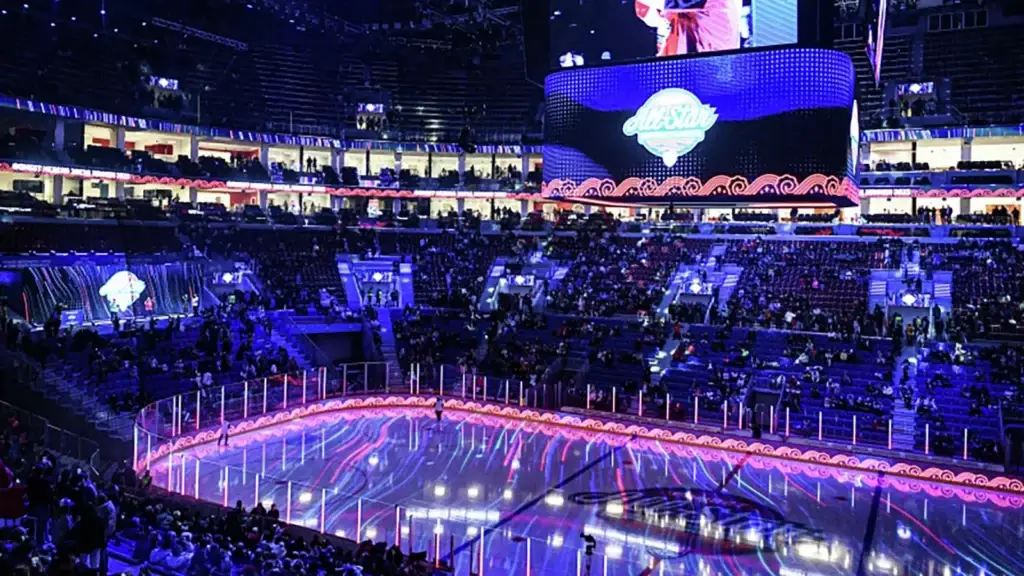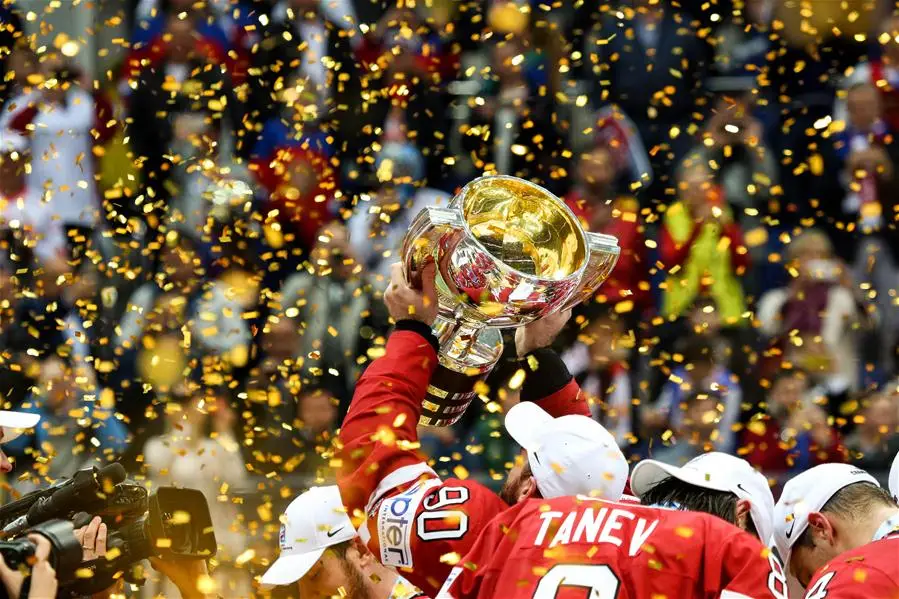Ice hockey stadiums are not just ice and stands, they are true symbols of the greatness and pride of their cities and even their countries. Look at these buildings – the biggest ice hockey stadiums attract not only fans, but also the attention of architects, tourists and even people who are far removed from the sport. They have become cultural centres that unite millions of hearts around the world and represent more than just a venue. Their importance goes far beyond ice hockey games – they are the heart of urban culture and the epicentre of fans’ emotions.
A list of the biggest ice hockey stadiums in the world: where are great things happening?
The world of ice hockey is proud of its stadiums, where the history of the sport is written. Among the largest ice hockey stadiums, the Bell Centre in Montreal, Canada, stands out. With a capacity of 21,302 spectators, it is the largest indoor stadium for ice hockey. Built in 1996, the Bell Centre has become a true icon of Canadian hockey and has hosted many historic games such as the NHL Finals and All-Star Games.

One of the most impressive stadiums in the United States is the Barclays Centre in Brooklyn, New York. The largest hockey arena has a capacity of 15,795, and although the main audience is basketball fans, hockey is not the last place to be. The Barclays Centre hosts the biggest hockey games in the American League, attracting hundreds of thousands of fans every year.
Just as important is the Luzhniki Arena in Russia. A historic stadium in Moscow that has long been a symbol of sporting greatness. Although it is mainly used for football, it often hosts major ice hockey events that gather up to 12,000 spectators in the stands.
State-of-the-art ice hockey arenas: Technology on the big ice
Modern ice hockey arenas have developed into technical marvels that offer fans and players the best possible experience. One such arena is the Little Caesars Arena in Detroit, USA. It is a benchmark for the use of innovative technologies such as LED lighting and a unique ice cooling system that keeps the surface at the perfect temperature regardless of the outside conditions. The largest ice hockey arenas offer a level of comfort that was simply not possible in the past.
The Vegas Golden Knights Arena is another example of a high-tech approach. Here, technology is combined with tradition: the digital infrastructure allows fans to follow game statistics in real time and smart screens bring the stadium walls to life, immersing spectators in the atmosphere of the game.
Architecture of the ice hockey arena: grandeur and uniqueness in detail
 The Minneapolis Arena in the USA is a perfect example of the combination of modernity and tradition. The huge glass façades convey a feeling of lightness, while the use of steel emphasises strength and resilience. It is a place where every element has been carefully designed and every detail reflects the cultural characteristics of the region.
The Minneapolis Arena in the USA is a perfect example of the combination of modernity and tradition. The huge glass façades convey a feeling of lightness, while the use of steel emphasises strength and resilience. It is a place where every element has been carefully designed and every detail reflects the cultural characteristics of the region.
In Russia, the Arena Omsk has become a symbol of uniqueness thanks to its traditional motifs. Elements reminiscent of traditional Russian architecture are used here, making the arena not only a sports venue but also a cultural monument. The architectural features have a direct impact on the atmosphere in the stands: Unique shapes and materials provide excellent acoustics and create a special feeling of closeness to the game.
Comparison of the largest ice hockey stadiums in different countries: Who is ahead in terms of size?
It’s time to carry out some analyses. In the USA, the arenas are characterised by large capacities and technical innovations. The Barclays Centre and Madison Square Garden are not only venues for sporting events, but also world-class concert venues. The USA is actively expanding its infrastructure and the arenas here often combine the functions of sports and entertainment centres.
Canada focuses on atmosphere and history. The Bell Centre is a vivid example of an arena where ice hockey is not just a sport, but a real national idea. In Russia, stadiums are more often built with a focus on multifunctionality: The ice palaces in Sochi and Kazan are used for both sports and cultural events. In Europe, on the other hand, compact but cosy arenas are preferred, where the spectators are as close as possible to the players, creating an unspeakable atmosphere.
Spectator records in the biggest ice hockey arenas
Records are an integral part of the sport and a testament to the passion of the fans. At the NHL finals, such as the game between Chicago and Boston in 2014, attendance records were set with over 22,000 spectators. The Olympic Games in Sochi also set a new attendance record with more than 12,000 spectators at the final between Canada and Sweden.
Moments like these make arenas more than just sporting venues – they are places where history is made and every seat witnesses great events. Record attendances are always accompanied by a unique atmosphere in which every scream and every emotion is multiplied by the overall energy of the stands.
Conclusion
 The biggest ice hockey arenas have already become an integral part of global ice hockey culture and their importance cannot be overestimated. In the future, fans will be treated to new behemoths like Nova Ice in Europe, which will be state of the art with maximum capacity and innovations the world has never seen before. These projects show that arenas are not here to stay, but will evolve to keep pace with progress and the demanding expectations of fans.
The biggest ice hockey arenas have already become an integral part of global ice hockey culture and their importance cannot be overestimated. In the future, fans will be treated to new behemoths like Nova Ice in Europe, which will be state of the art with maximum capacity and innovations the world has never seen before. These projects show that arenas are not here to stay, but will evolve to keep pace with progress and the demanding expectations of fans.
The futuristic stadiums will be equipped with the latest comfort systems, improved acoustics and sophisticated infrastructure to ensure that every game will be memorable for fans forever.

Key factors influencing the future of arenas:
- Technological innovations: automatic cooling systems, improved ice materials, high-quality lighting systems.
- Economic situation: The development of arenas depends directly on the financial capacity of countries and sponsors.
- Fan interest: The greater the interest in ice hockey, the more is invested in the development of new arenas.
- Infrastructure development: The provision of facilities for fans, such as transport hubs, restaurants and leisure facilities, will be an important part of the planning of new projects.
 en
en  ru
ru  de
de  ar
ar  es
es  hi
hi  fr
fr  nl
nl  it
it  pt
pt  el
el 



